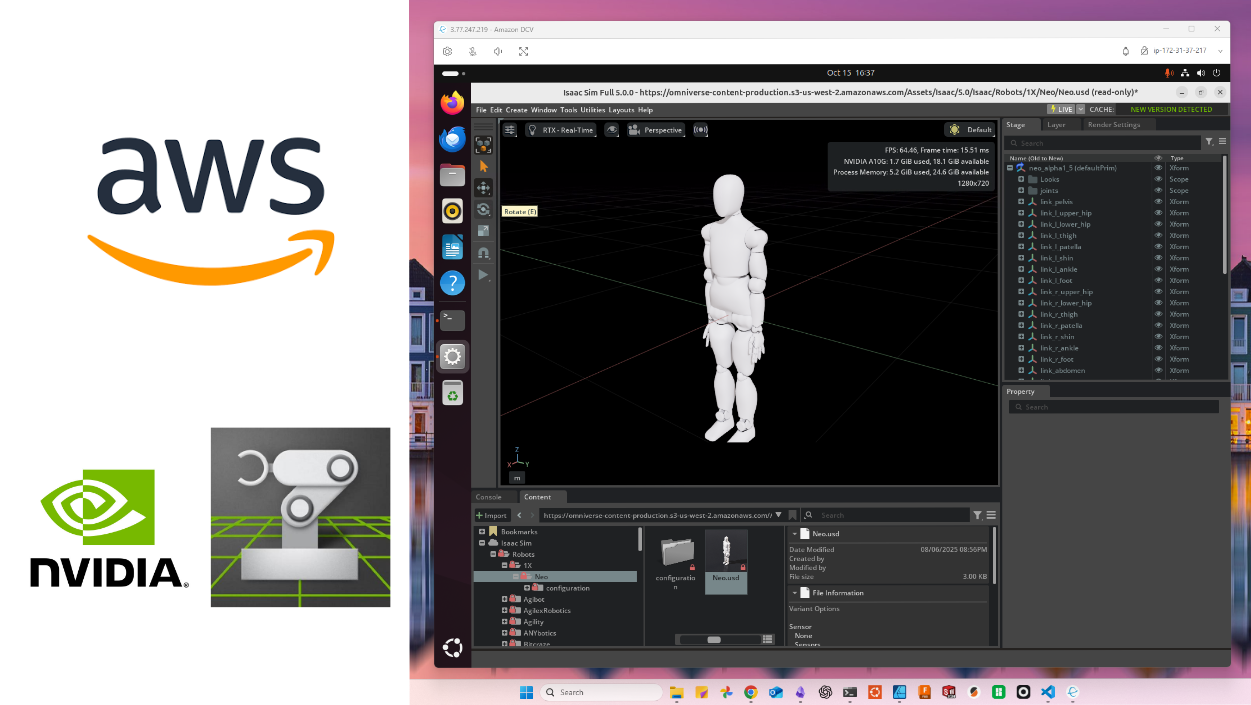
2025年10月15日
I needed to set up Isaac Sim on an AWS instance type not officially supported by the NVIDIA’s official Amazon Machine Image (AMI) NVIDIA Isaac Sim Development Workstation (Linux) for the Real World Robotics class- this is my (cleaned up) memo on how to do it.
Why would you want to do this? For us it was because the instance types supported by the official image were:
g5.4xlarge at $2.0308/hourg4dn.2xlarge can also run Isaac Sim spec-wise, at only $0.94/hourg5.4xlarge due to the InsufficientInstanceCapacity error, meaning there aren’t enough machines in the region that can be allocated for our instance.

The tricky part I had to figure out was setting up the remote desktop with Amazon DCV- installing Isaac Sim (& Isaac Lab) was pretty straightforward, as I started out from the NVIDIA GPU-optimzied AMI which has the NVIDIA drivers already installed.
After going through this, you should be able to:
disclaimer: I’m just sharing what worked for me — use this at your own risk! Any AWS costs, instance hiccups, data loss, or other issues that come up from following this guide are completely your responsibility. Double-check your settings and pricing before spinning up anything.
The website https://instances.vantage.sh/ has a useful table of all available AWS instance types- you can filter by the specs in the Isaac Sim requirements to choose your instance type.
For me, g4dn.2xlarge showed up as the cheapest (at $0.94/hour in eu-central-1) instance type which fulfills the minimum Isaac Sim requirements.
Before creating the instance, we create the security group so it can be chosen during the instance launch (of course you can do this later as well, it’s just “cleaner” for the tutorial if we do this first).
The purpose is to set up which ports will allow inbound connections to your instance. In the “Security Groups” menu in EC2, create a new security group (name suggestion: IsaacSimConfiguration) with the inbound rules
| Type | Protocol | Port range | Source | Description |
|---|---|---|---|---|
| SSH | TCP | 22 | Anywhere-IPv4 | for SSH connections |
| Custom TCP | TCP | 8443 | Anywhere-IPv4 | remote desktop with Amazon DCV |
| Custom TCP | TCP | 49100 | Anywhere-IPv4 | WebRTC streaming for Isaac Sim |
| Custom UDP | UDP | 47998 | Anywhere-IPv4 | WebRTC streaming for Isaac Sim |
g4dn.2xlarge)IsaacSimConfiguration that you made earlierNow you should be able to connect to it with ssh -i C:\Users\path\to\key.pem ubuntu@***.***.***.***
if your account doesn’t have enough vCPU quota and you can’t launch your EC2 instance, request an increase in the Running On-Demand G and VT instances in the Service quotas page. I think it’s easier to get requests approved if you also send a small message explaining why you need this increase.
https://eu-central-1.console.aws.amazon.com/servicequotas/home/services/ec2/quotas (select your region)
optional but strongly recommended
After you launch the instance, you can set an alarm so that the instance turns off automatically after 1 hour of low activity (< 2% CPU usage)- important to avoid being overcharged when you’re not using the instance at all.
Create alarm as follows (I referred to this article for this), so that it detects that CPU usage has been less than 2 % for 4 consecutive samples, which are sampled every 15 minutes, i.e. instance has low usage for more than 1 hour (if Period is set to 1 hour and Consecutive periods is set to 1, as in the original article it may turn off right after the instance has booted, so use this multi-sample configuration instead)
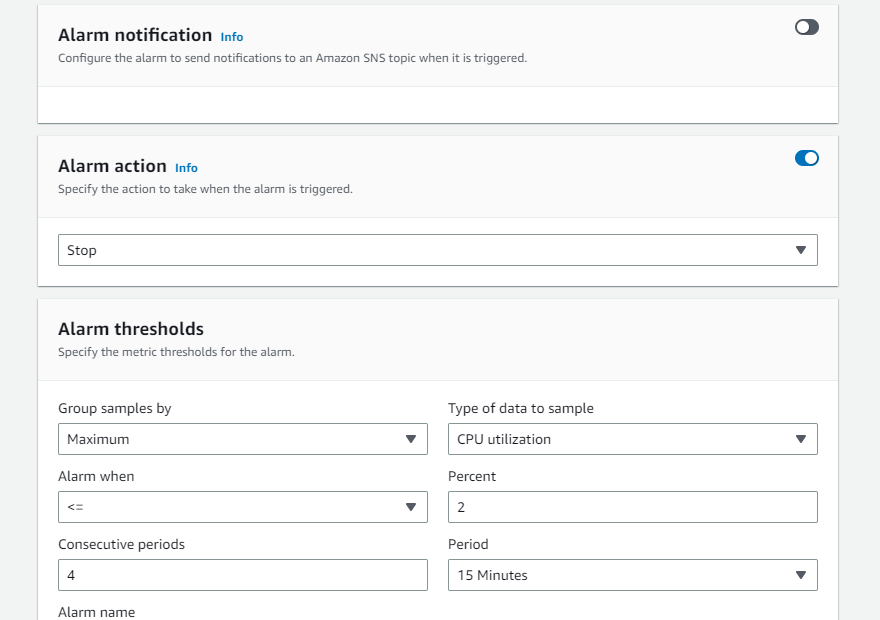
Use the default name for the “Alarm name”- which ensures it won’t clash with other existing alarms
We will mostly follow the official AWS guide for Installing the Amazon DCV Server on Linux with a few changes that I noticed was needed.
Official tutorial: https://docs.aws.amazon.com/dcv/latest/adminguide/setting-up-installing-linux-prereq.html
Run the commands for Ubuntu 20.x, 22.x, and 24.x in the official page. You can skip Verify OpenGL software rendering as we’re on a GPU Linux server
Make sure you also run the step Install GPU drivers for graphics instances- the NVIDIA driver is already installed but you need to generate an updated xorg.conf with the nvidia-xconfig command.
only after this the ps aux | grep X | grep -v grep check worked for the X Server running check.
Official tutorial: https://docs.aws.amazon.com/dcv/latest/adminguide/setting-up-installing-linux-server.html
Again, run the commands for Ubuntu 20.x, 22.x, and 24.x in the official page. I recommend you also install the options:
nice-xdcv package (for virtual sessions)nice-dcv-gl package (the dcvgladmin and dcvgldiag commands installed through here will be useful in the next part)Official tutorial: https://docs.aws.amazon.com/dcv/latest/adminguide/setting-up-installing-linux-checks.html
I needed to sudo reboot before the checks worked. I skipped the Verify the Amazon DCV DEB package signature step.
Official tutorial: https://docs.aws.amazon.com/dcv/latest/adminguide/setting-up-license.html
The page guides you to create a JSON-based IAM role for the Amazon S3 access policy. Unfortunately this is quite unintuitive- in the AWS console, choose “Modify IAM role” and “Create new IAM role”. Here, you first have to make an empty role in order to define a role with JSON (which I found out thanks to this aws forum post).
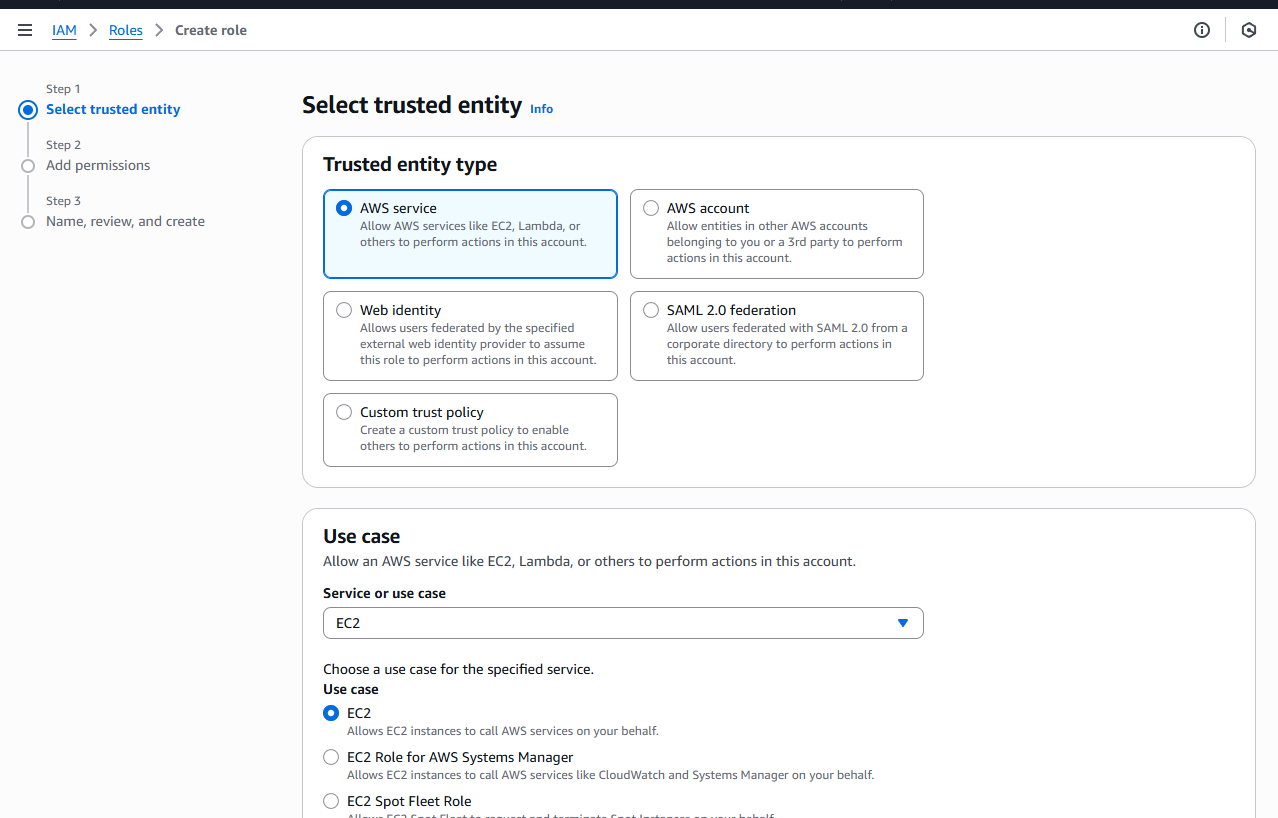
Skip the next page, and in the proceeding page set a role name (suggested: DCV-EC2-LicenseAccess)
Then select the DCV-EC2-LicenseAccess role again from the list of all IAM roles, and in there go to “Add permissions” -> “Create inline policy”

choose JSON and copy & paste the JSON (replace region with your instance’s region, e.g. eu-central-1)
{
"Version":"2012-10-17",
"Statement": [
{
"Effect": "Allow",
"Action": "s3:GetObject",
"Resource": "arn:aws:s3:::dcv-license.region/*"
}
]
}
Official tutorial: https://docs.aws.amazon.com/dcv/latest/adminguide/manage-start.html
# to start the DCV server
sudo systemctl start dcvserver
# configure the Amazon DCV server to start automatically on Linux
sudo systemctl enable dcvserver
Unfortunately all this is still not enough, but we are almost there - we need to set it up to start a DCV session automatically (or it needs to be started with dcv create-session session_ID)
https://docs.aws.amazon.com/dcv/latest/adminguide/managing-sessions-start.html
open /etc/dcv/dcv.conf in a text editor and edit its entries:
[session-management]
create-session = true
[session-management/automatic-console-session]
owner="ubuntu"
and relaunch DCV Server.
A password must be set for the ubuntu user before connecting with the DCV.
sudo passwd ubuntu
To connect through the browser, just go to https://***.***.***.***:8443 (HTTPS is required), ignore the warning, and login.
Or download the DCV client for your environment and connect to ***.***.***.***:8443. You should be able to connect!
If you have any issues about not being able to connect, try the post-installation checks again and make sure all are working.
The official instructions for Installation using Isaac Sim Pip Package worked perfectly for me, thanks to the preinstalled NVIDIA drivers. Make sure you’re in the remote desktop when you run isaacsim so that the GUI can launch.
Assuming it runs 24×7 (≈730 hours/month)…
g4dn.2xlarge on-demand pricing in eu-central-1: $0.94/hour x 730 hours = $686.2i.e. In total, around $715 per month. Note: data-transfer also gets charged but not included.
□ Cut off the Internet, and LLMs are still a hallucinating mess.
Cut off the Internet, and LLMs are still a hallucinating mess.
 How to Set Up Isaac Sim on Non-Officially Supported AWS Instances with Remote Desktop Access
How to Set Up Isaac Sim on Non-Officially Supported AWS Instances with Remote Desktop Access
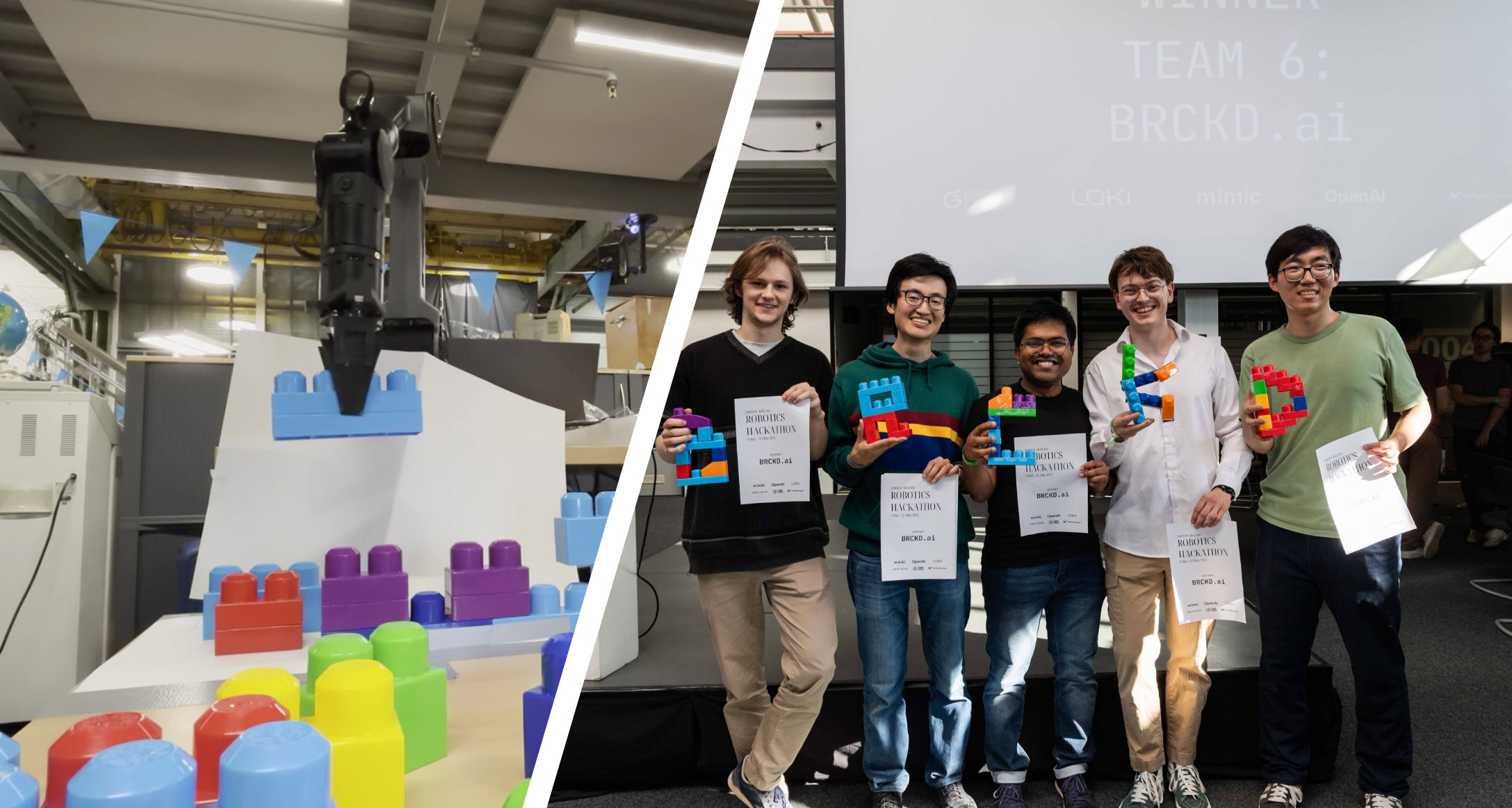 About that time we won the mimic / Loki / OpenAI Robotics Hackathon
About that time we won the mimic / Loki / OpenAI Robotics Hackathon
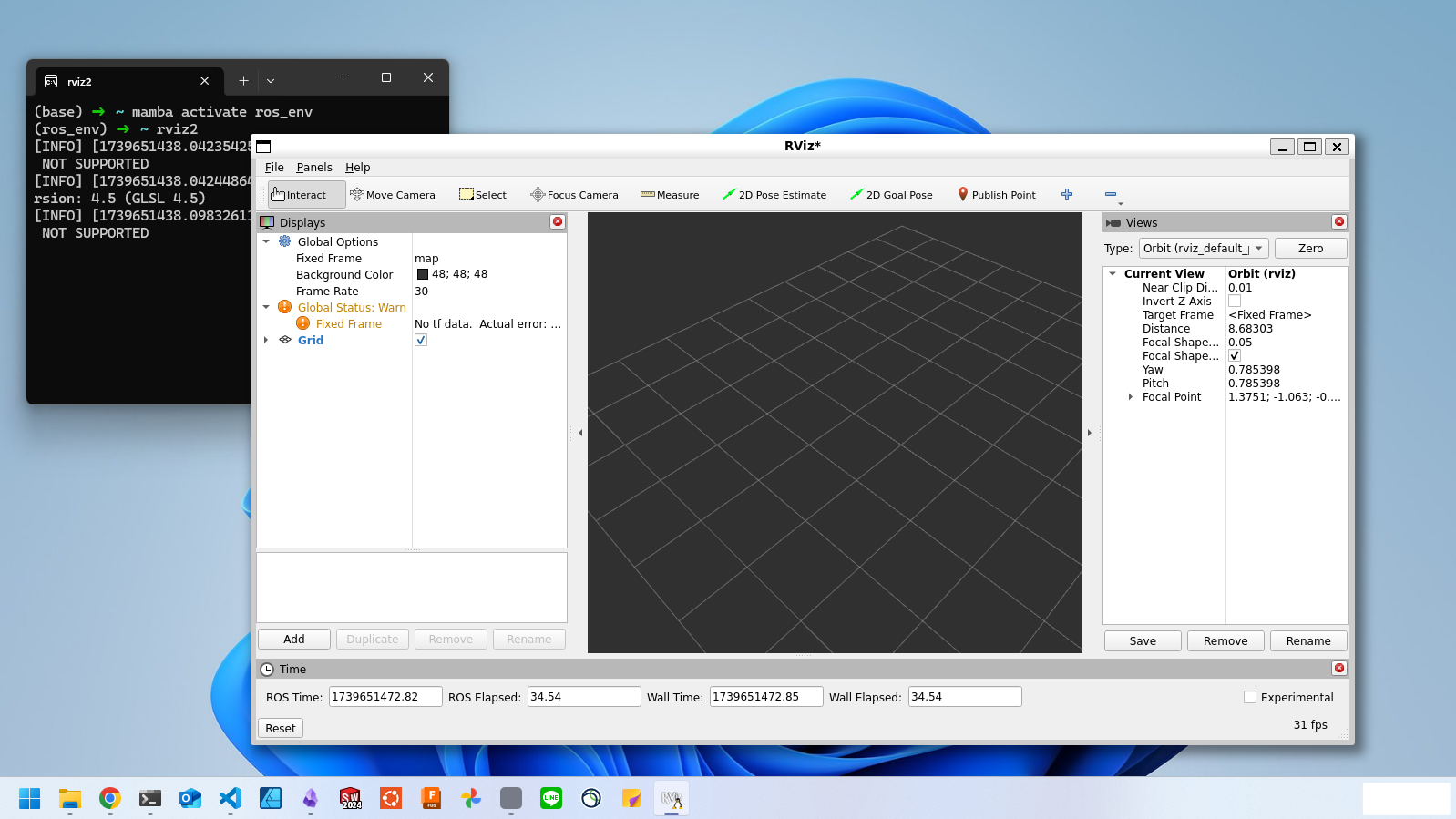 Installing ROS2 in a Virtual Environment Using RoboStack
Installing ROS2 in a Virtual Environment Using RoboStack